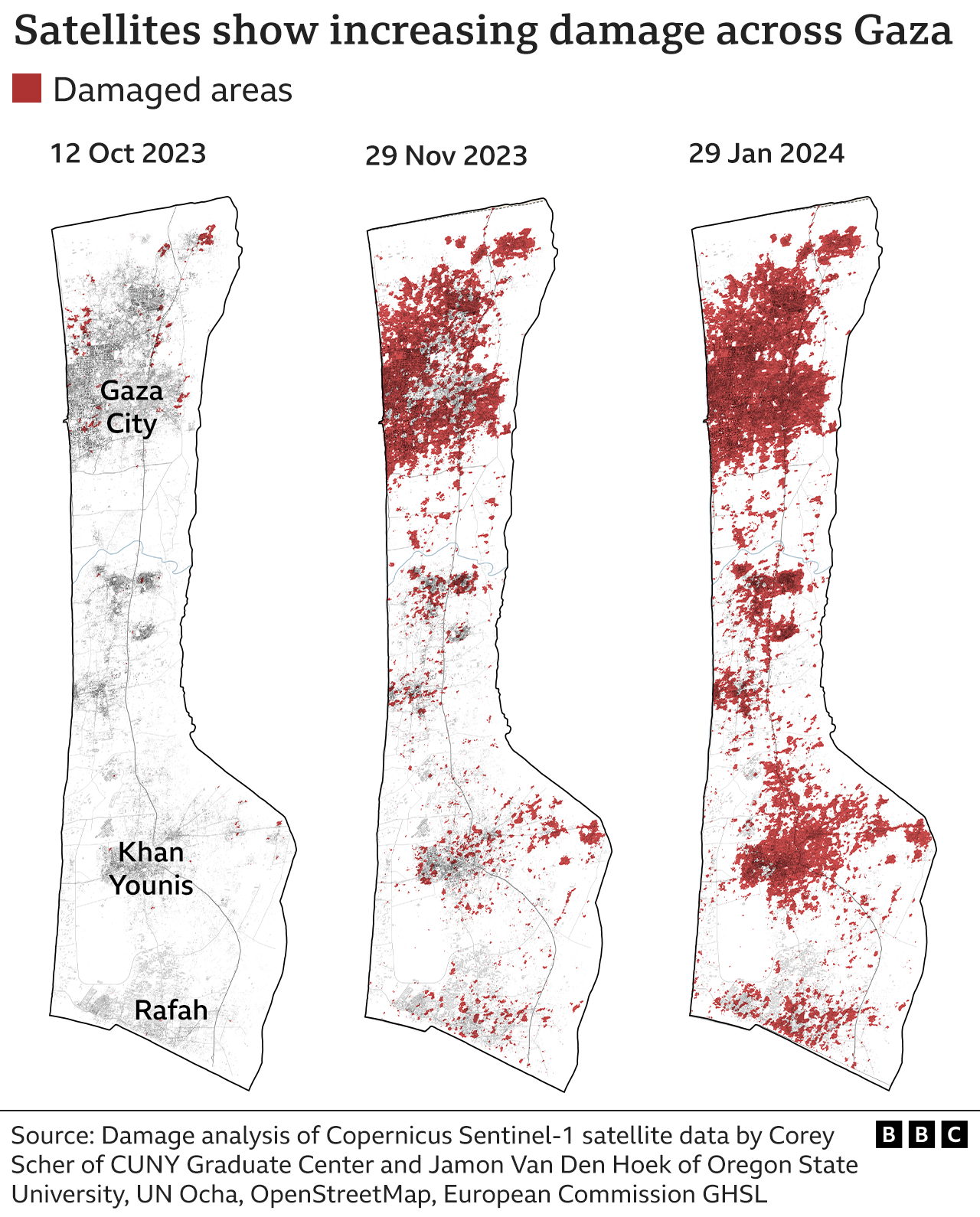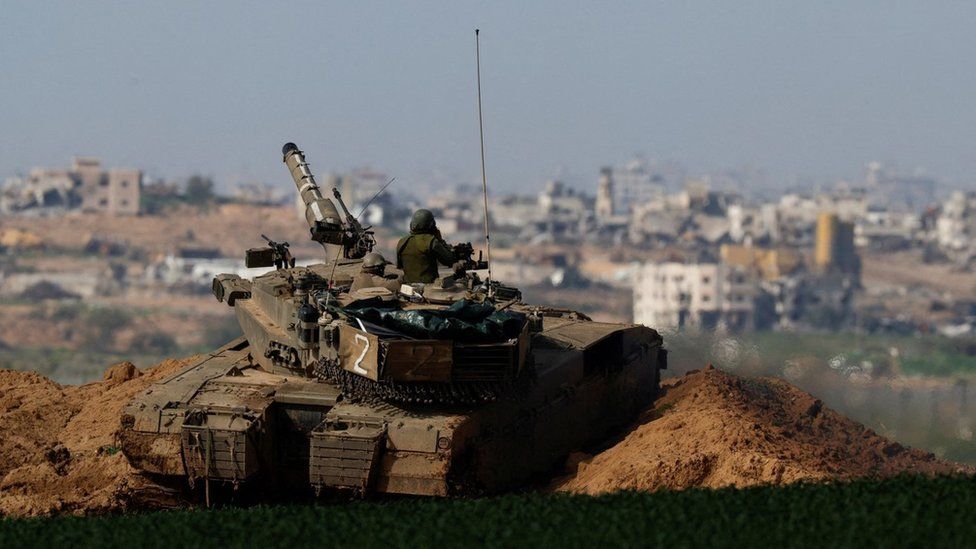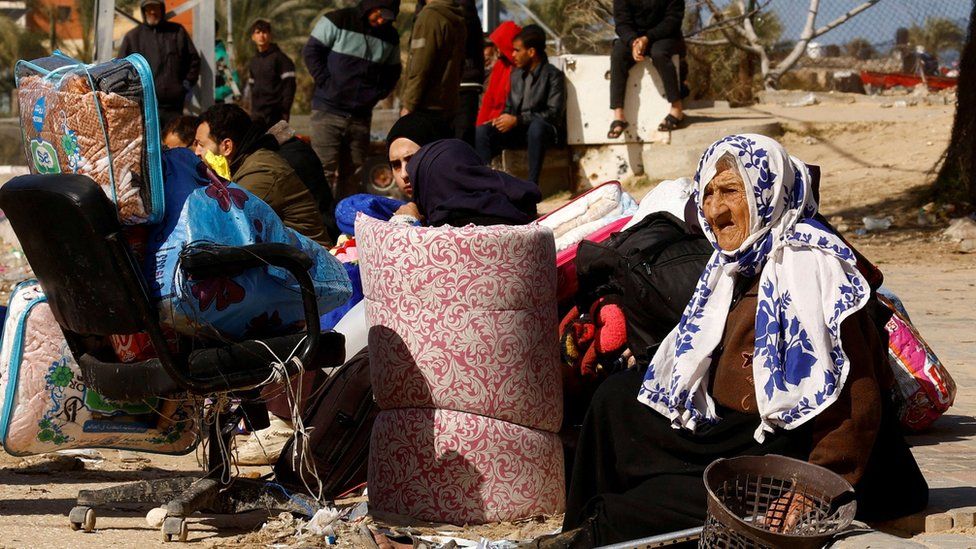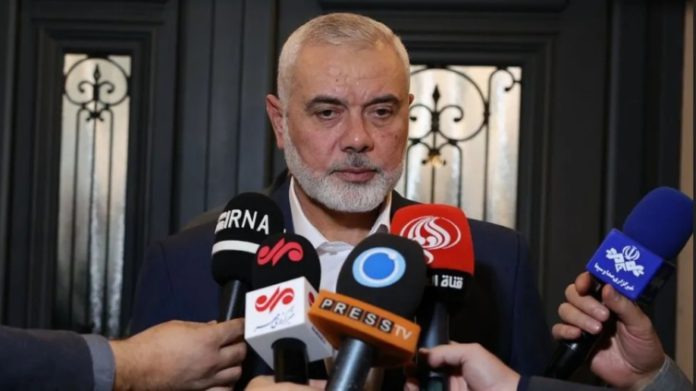Hamas‘s political leader has confirmed it is studying a new proposal to pause the fighting in the Gaza Strip.
Ismail Haniyeh said the group had been invited to discuss a framework set out by Israel, the US, Qatar and Egypt.
It reportedly proposes a six-week truce, when more Israeli hostages would be exchanged for Palestinian prisoners.
Mr Haniyeh stressed that Hamas’s priorities were a permanent ceasefire and full Israeli withdrawal, but Israel’s prime minister ruled them out.
Benjamin Netanyahu insisted the war would not end until “total victory” had been achieved, which he said meant the elimination of Hamas and the release of all hostages.
The conflict was triggered by an unprecedented cross-border attack by Hamas gunmen on southern Israel on 7 October, in which about 1,300 people were killed and about 250 others taken hostage.
More than 26,700 people have been killed in Gaza since then, according to the territory’s Hamas-run health ministry.
During a week-long ceasefire in late November, 105 Israeli and foreign hostages were freed in exchange for 240 Palestinians held in Israeli jails.
Israel says 136 hostages are still being held, although about two dozen of those are presumed to be dead.

On Sunday, Qatar’s prime minister, the director of the US Central Intelligence Agency and Egypt’s intelligence chief held talks in Paris with the heads of Israel’s Mossad intelligence agency and Shin Bet internal security agency.
They agreed the terms of a framework for a second pause in the fighting, which US media reports said would see Hamas release any remaining elderly, women and child hostages in exchange for Palestinian prisoners during an initial period of six weeks. If that was successful, there could be another two phases of swaps, with male Israeli soldiers eventually included.
US Secretary of State Antony Blinken said on Monday that he could not confirm the details of the proposal, but called it “a strong one and a compelling one”.
The Israeli prime minister’s office called the talks “constructive”, but noted that there were “significant gaps which the parties will continue to discuss”.
On Tuesday morning, Hamas’s Qatar-based political chief said it had received an invitation to go to Cairo to discuss the framework and would respond “on the basis that the priority is to halt the aggression on Gaza and pull the occupation forces out”.
Mr Haniyeh stressed that Hamas was “open to discussing any new practical initiative or ideas, provided that they should lead to a comprehensive halt to the aggression, securing shelter for our displaced people… rebuilding [Gaza], lifting the blockade and achieving a serious swap of the captives to guarantee freeing our prisoners” in Israeli jails.
Israel’s far-right National Security Minister, Itamar Ben-Gvir, meanwhile threatened to “dismantle” the coalition government if a “reckless deal” was reached with Hamas, which is proscribed as a terrorist organisation by Israel, the UK, US and other countries.
Later, Mr Netanyahu appeared to address the remarks by both men.
“I would like to make it clear: We will not conclude this war without achieving all of its goals,” the prime minister said in a speech in the occupied West Bank. “This means eliminating Hamas, returning all of our hostages and ensuring that Gaza never again constitutes a threat to Israel.”
“We will not withdraw [forces] from the Gaza Strip and we will not release thousands of terrorists. None of this will happen. What will happen? Total victory!”

The developments came as battles raged between Israeli forces and Hamas fighters across Gaza, particularly in the southern city of Khan Younis.
On Tuesday afternoon, the Palestine Red Crescent Society said Israeli tanks were stationed in the “front yard” of Al-Amal Hospital, which is in the west of the city, and that they were “firing live ammunition and smoke grenades at the displaced individuals and PRCS staff”.
“We deeply worry for the safety of our teams, the wounded, the sick, and thousands of displaced people in the building. Fires have broken out in tents within the confines of the PRCS Headquarters,” it added.
There was no immediate comment from the Israel Defense Forces (IDF), but a spokesperson earlier told Reuters news agency that its forces were not storming the hospital.
It has previously accused Hamas of operating inside and launching attacks from hospitals, which the group and local medics have denied.
Intense fighting and bombardment have also been reported around the nearby Nasser Hospital, which is the largest medical facility still functioning in Gaza.
Médecins Sans Frontières (MSF) said on Monday that the handful of medics remaining there were contending with very low supplies to treat between 300 and 350 patients who not could be evacuated.
Rami, an MSF nurse, described how surgeons in the emergency department were being forced to reuse abdominal gauze. “They use it once, then squeeze out the blood, wash it, sterilise it and reuse it with another patient,” he said.

The IDF believes top Hamas commanders are holed up inside tens of kilometres of tunnels beneath Khan Younis, possibly along with hostages.
It says it has so far “eliminated over 2,000 terrorists above and below ground” there and uncovered facilities for holding hostages and command centres.
On Tuesday, the IDF confirmed that it had been pumping “large volumes” of water into parts of Hamas’s vast network of tunnels across Gaza.
There was widespread concern when its plan was first reported. Hostages’ families feared it could threaten their lives and experts said using seawater could gravely damage the aquifer that is Gaza’s only natural water source.
“The capability was developed in a professional capacity, including analysis of the soil characteristics and the water systems in the area to ensure that damage is not done to the area’s groundwater,” the IDF said.
“The pumping of water was only carried out in tunnel routes and locations that were suitable, matching the method of operation to each case.”


